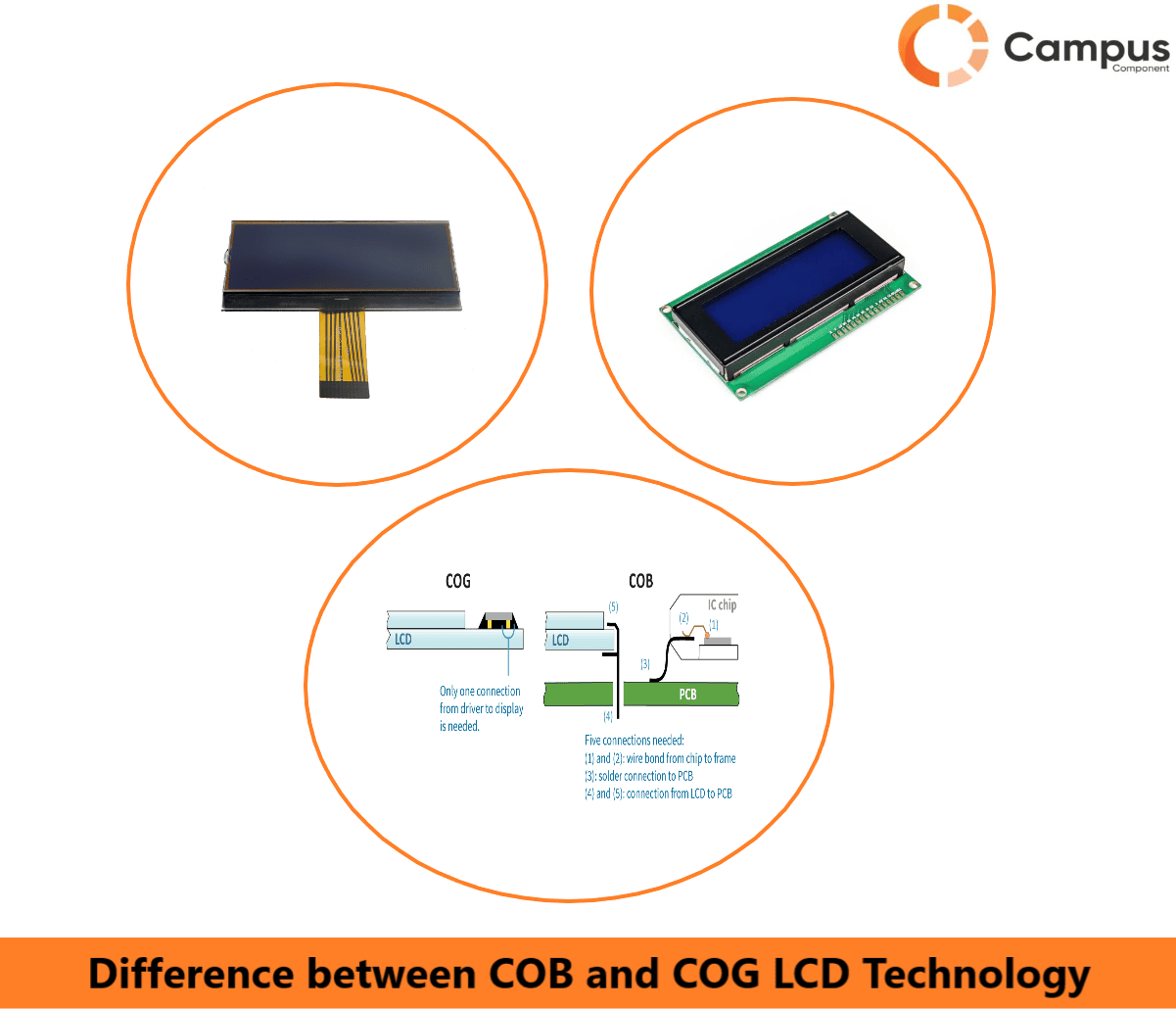
We see applications of Liquid Crystal Displays (LCDs) in our daily lives like our Smartphones, Tablets, Laptops, and countless other devices. But behind it, there's a fascinating world of LCD technology, with COB and COG being two main technologies. Let's discuss the key differences between these technologies to understand their unique strengths and applications.
COB (Chip-on-Board) and COG (Chip-on-Glass) are two types of LCD modules that differs in how the driver chip is positioned.
What is COB LCD Technology?
The “COB” stands for “Chip on Board” technology which is a lighting technology which makes use of light-emitting diodes (LCDs).
In SMD (Surface Mount Device) technology, beads are soldered onto the PCB whereas the COB process involves covering the silicon placement point with thermally conductive epoxy resin on the surface of the substrate. And the LCD chip is fixed to the interconnected substrate using conductive or non-conductive adhesive via adhesive or solder. Because of this chip establishes electrical connectivity with the PCB board through lead bonding.
The COB packaging process represents a modern way from traditional packaging technologies reliant on brackets and supports, thereby reducing the number of soldering points.
This eliminates the need for traditional ribbon cables or connectors, streamlining the assembly process and reducing the overall size of the display module.
COB displays are compact and cost-effective, but may have lower resolution than other technologies. COB modules are durable and robust, making them ideal for high-reliability applications.
Lets Understand What is COG Display
COG (Chip on Glass) Display
In traditional LCD modules, the LCD driver is usually situated on a PCB which is located behind the module, this increases the display's overall thickness. Connection to the drive is established using either fixed pins or elastomer connectors. These connectors need multiple bonds for each drive input to the LCD. LCDs typically demand multiple drive inputs (even with multiplex drive techniques), the quality of these bonds significantly impacts reliability.
In contrast, COG modules position the LCD driver directly onto an overlapping edge of one of the glass plates composing the LCD. This makes the display less than 3 mm thick, where all connections from the LCD driver to the LCD are totally shielded from the external surrounding. With COG modules, each connection requires only a single bond, ensuring optimal reliability of the module.
This eliminates the need for a separate PCB, resulting in incredibly thin and lightweight displays.
COG displays are smaller, more cost-effective, and highly customizable than typical LCD modules. They also have improved image quality and lower power consumption. COG modules are thinner and more compact than COB modules, and are often used in portable machines and handheld products.
COG technology is often preferred for applications where space constraints are critical, such as in handheld devices and automotive displays.
COB | COG |
Advantages of COB:
Applications of COB:
|
Advantages of COG:
Applications of COG:
|
Choosing between COB and COG:
The choice between COB and COG depends on your development and application needs:
For Ruggedness and Reliability in remote conditions COB should be your choice.
For Thinness and Sleekness and stylish design COG should be your go to choice.
By understanding the different characteristics and features of COB and COG technologies, you can make good decisions when building the ideal LCD solution for your project.
Conclusion:
Thus we have discussed above in detail the difference between the COB and COG LCD Technology. COB offers simplicity and cost-effectiveness, while COG provides compactness and enhanced reliability. By understanding these differences designers and engineers can make better decisions based on the specific requirements of their projects. Whether it's optimizing space, improving reliability, or managing costs, choosing the right LCD technology is essential for achieving success in display-based applications.
If you are building an IOT device and looking for COB or COG LCD display from brands such as Sinda , Nextion, Abilton to incorporate in your project then reach out to us today, we are the best electronic components online store Campus Component.
